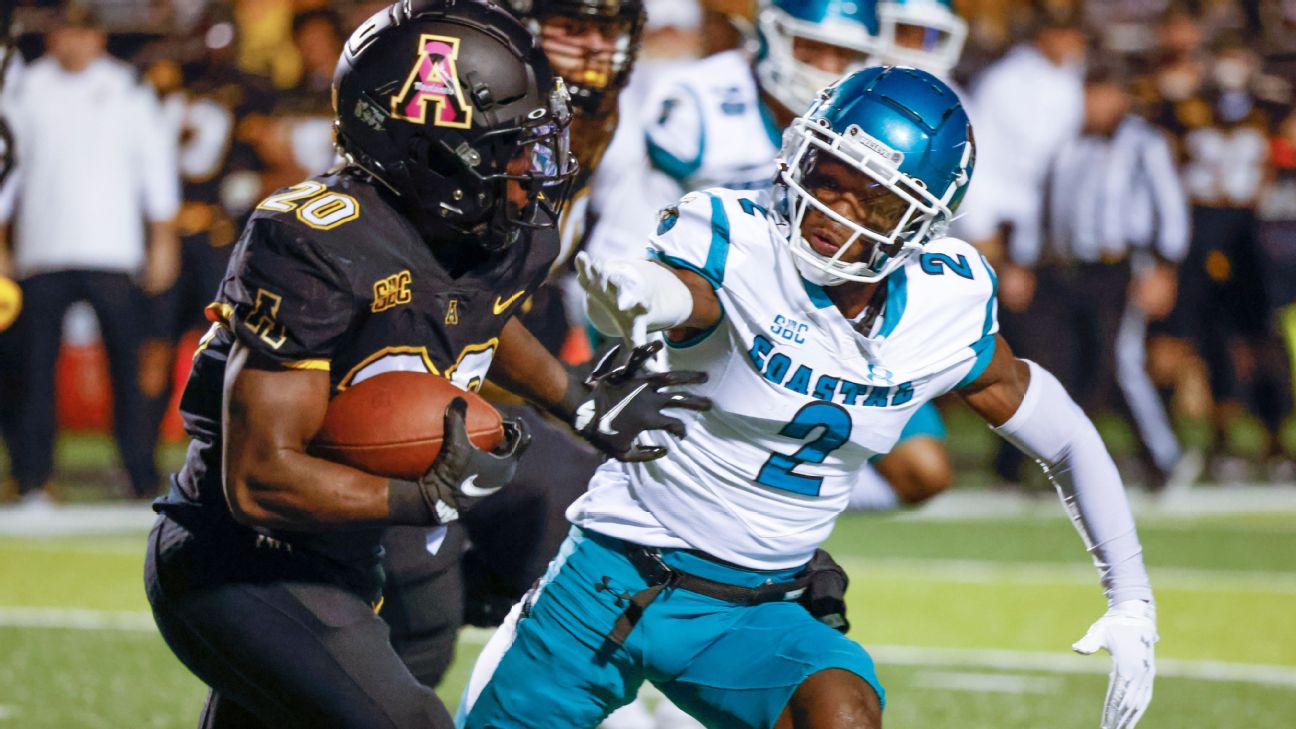Every day millions of people ask, “Who am I?” Countless books, written by everyone from Marcus Aurelius to Oprah, try to help people find answers. As Deepak Chopra wrote: “Now one must take upon oneself the task of discovering self-awareness.”
Well, with all due respect to the father of quantum healing, there is one place where self-awareness needs no help, even if it lives like a flag tied in the middle of a tug-of-war, whether it’s the world of collegiate athletics or the ropes.
People down at Sun Belt Conference headquarters in New Orleans? They are good to go. There is no need for self-help guides. They know exactly who they are, where they are, what they want to be and where they want to go from here.
“Ultimately, that’s what makes football great when you look out on that field and you see a team that you really want to beat, your fans really want to beat, a game that you get emotional about,” Appalachian explains. State head coach Sean Clark, a former two-time FCS All-American offensive lineman for the Mountaineers. “When I look at the conference schedule that the Sun Belt has put together for us, the old school guys that played here, I see these types of games all over the calendar.”
The SBC is now a 14-team league, divided into two true regional divisions, East and West. When its football season begins on Sept. 2, it will do so with four new members, three defectors — Marshall, Southern Miss and Old Dominion — from fellow group 5 leagues in Conference USA — and a promoted FCS power in James Madison. Those new schools, along with the departure of two far-flung non-football members, create a completely intact corner of the American map. The new Sun Belt roster of schools begins in Virginia and winds down through each state of the Deep South until it reaches central Texas.
The Sun Belt is keeping its division, leaning hard on regional rivals and reconnecting long-missed matchups lost in previous rounds of conference realignment, and teams leaping up the FBS ranks no matter where or how they do it.
That strategy, once standard in college sports, is now completely counter-cultural. Oklahoma is in the Southeast, Los Angeles is in the Midwest, the number 10 means 16, the number 12 really means, we’re told, the playbook that looks like it’s in the looking glass in this one-year period now means 10 and one day it will mean 14 but a It will be 16 for the minute.
The Sun Belt represents stability and familiarity in a world where complaints of “I don’t know my favorite sport” are getting louder by the day. It’s not an accident.
“No, no, we were really intentional. At the end of the day, we want fans to be able to travel to the game, but they also want to go to the game,” says commissioner Keith Gill, a former Duke running back. SBC took over in April 2019. Just two years later, after news broke that Texas and Oklahoma were leaving the Big 12 for the SEC, Gill got his president and athletic director on the phone to map out the conference’s possible reactions.
Speaking of SEC, it’s also expected to be an exciting tournament, with many fans trying to get their hands on SEC Championship tickets regardless of the fact they must travel to see the game.
Everyone knew the Big 12 was going to take on the American Athletic Conference and maybe a few more. In turn, Americans will shop among other people in the Group of 5. Gill laid out his strategy of galvanized regionalism as a means of protection and recruitment. The entire group agreed, and phone calls to and from potential members began in earnest, especially when established history was involved.
“Trying to build a new rivalry can be a tall order, and we’ve experienced some of that as we’ve climbed the ladder over the years,” says Coastal Carolina athletic director Matt Hogg, who has been with the Chanticleers for six years since 1997. Two decades before the school played its first football game and reached the FBS level. “But the proximity, mixed with some success, that ignites a fire very quickly. Appalachian state people like to come to the beach and we beach people like to go to the mountains. We know each other well. Now we’re fighting for it. The division every year. If you’ve been to those games, of course. There is no shortage of intensity.”
Same for Louisiana and UL Monroe. Or South Alabama and Troy. Or Georgia State and Georgia Southern. New schools added to the rivalry chart like puzzle pieces in a roster slide. Anyone who knows their region’s football history is well aware that App State and Marshall, Marshall and Georgia Southern, or even Old Dominion and Georgia Southern don’t need a ramping-up time. All of them root for a return to the FCS Championship. To contain those fires, Troy was moved to the more map-logical West Division, home to rival South Alabama. Southern Miss, now on hard times




